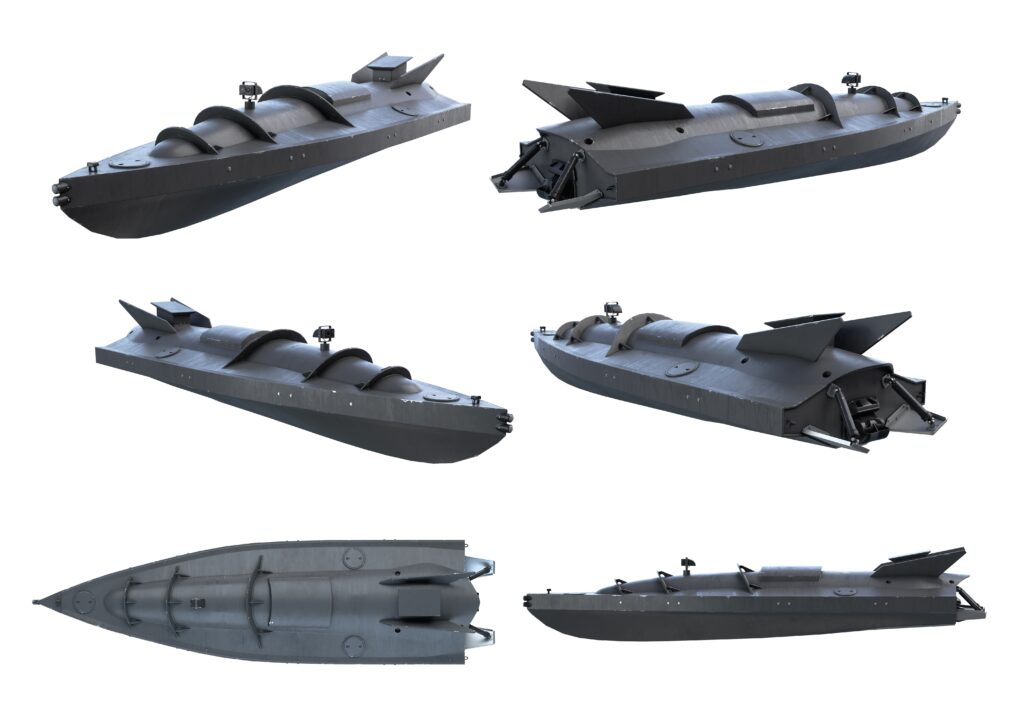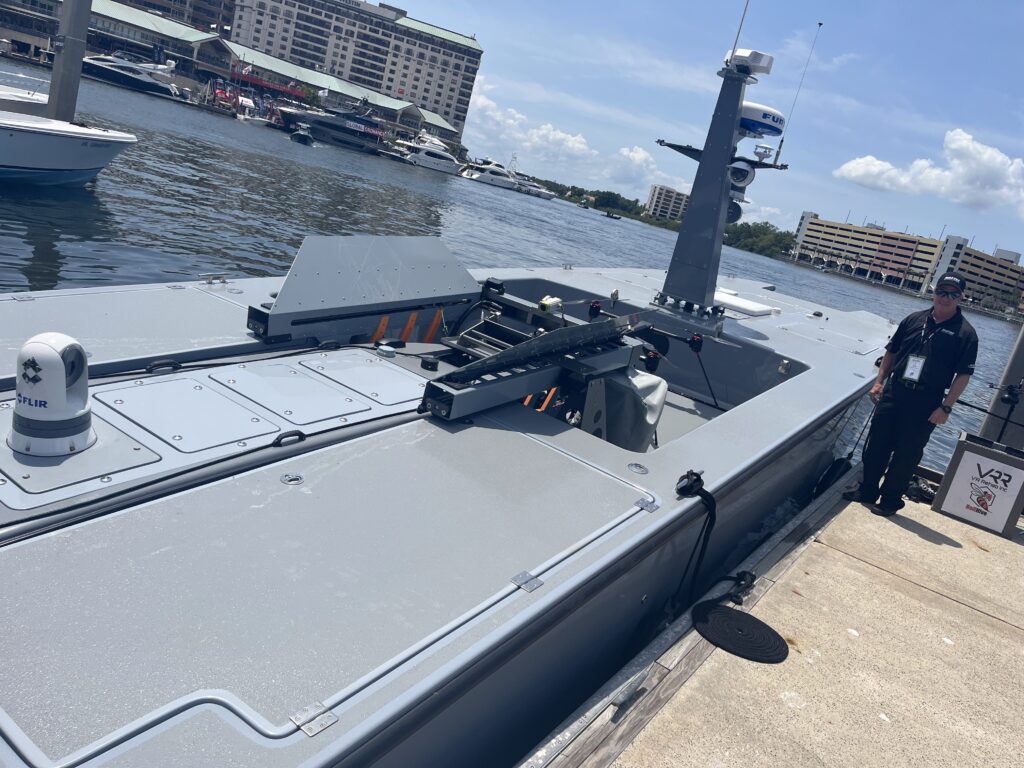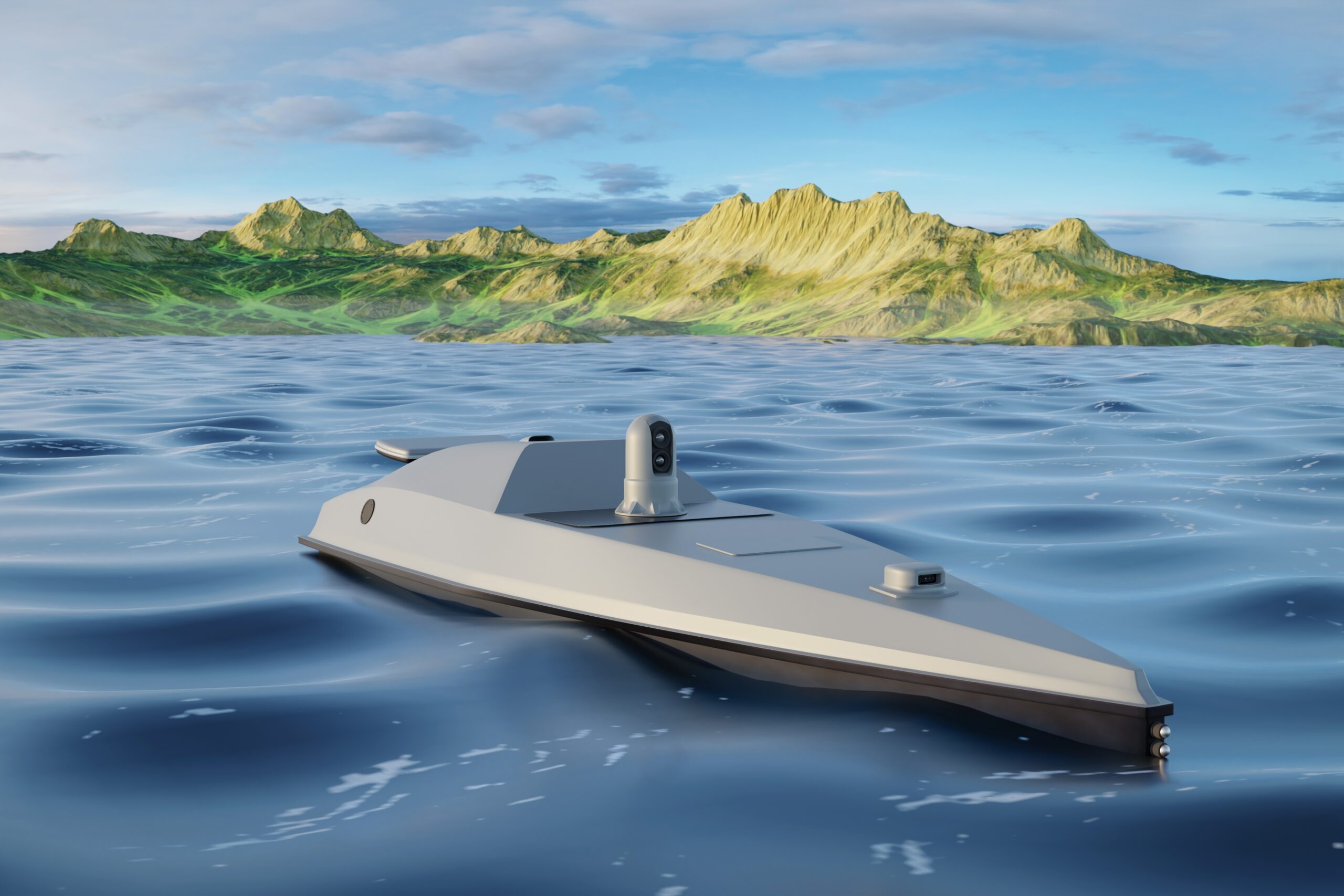By: Philip Hicks, AG U.K. Ambassador*
In the Black Sea, Ukraine’s daring use of small unmanned surface vessels (sUSVs) against the Russian Navy drives a new chapter in naval warfare– one no longer defined by massive fleets or expensive hardware. This shift, making headlines across strategic and defense circles, has not only altered tactical outcomes, but accelerated doctrinal change and forced a global rethink of what 21st-century maritime dominance looks like. As Rear Admiral Michael Mattis, Commander of Task Force SIX SIX (CTF 66), and his team observed from the frontlines and described at Uncrewed Naval Systems conference in London, the lessons emerging from this “battle lab,” both immediate and far-reaching, signal a new naval paradigm where software-driven mass and flexible autonomy have become the new currency of conflict.
A Conflict That Rewrote the Maritime Playbook
The Black Sea conflict has emerged as one of the most consequential theaters of modern warfare, not because of its scale, but due to its relentless innovation. Ukraine’s audacious deployment of sUSVs against the Russian Navy has redefined strategic calculus within the maritime domain. What started as a defensive campaign using mines and coastal cruise missiles soon matured into a sophisticated, asymmetric offensive, one that leveraged low-cost platforms to deliver high-value effects and upended classical naval doctrine.
Rear Admiral Michael Mattis, Commander of Task Force SIX SIX (CTF 66), has closely observed this transformation. Established in October 2023, the U.S. Navy created Task Force SIX SIX to accelerate its comprehension of the action-reaction-counteraction cycle unfolding in Ukraine’s maritime campaign. Mattis’s team has analyzed operational phases, tactical evolutions and strategic implications to translate battlefield innovation into future doctrine for allied forces.
Tactical Adaptation: From Defense to Disruption
During 2022–2023, Ukraine relied on conventional deterrence combinations, such as mines and Neptune and Harpoon missiles, to defend Odessa and reclaim Snake Island. Early sUSV operations were nascent, costly and marked by attrition rates nearing 50%. Missions typically involved 4–6 vessels, with only 2–3 likely to survive the journey to Russian targets.

By early 2024, the operational tempo shifted dramatically. Ukraine’s six-week “golden period” saw massed sUSV deployments of up to 22 vessels per mission that succeeded in sinking Russian warships, including a patrol ship and a landing ship tank (LST). These strikes, which even reached the Kerch Bridge area, triggered a reshuffle among Russian naval command and resulted in the dismissal of the Black Sea Fleet Commander.
Russian forces responded by escalating rotary-wing patrols, rolling out electronic warfare (EW) systems and launching cyber attacks against USV command links. Ukraine, in turn, met these challenges head-on by adopting fiber-optic communications, adding navigation redundancies and implementing onboard automatic target recognition capabilities.
By mid-2025, the Black Sea had become a live “battle lab,” where adversaries and partners iteratively adapted to each other’s emerging technologies and tactics. For the U.S. Navy, this environment provides rare clarity on next-generation warfare, where software, modularity and mass of attritable platforms take precedence over conventional assets.
Strategic Doctrine: The New Maritime Equation
Rear Admiral Mattis highlighted a dramatic shift in how the U.S. Navy must approach uncrewed systems. The Black Sea conflict proved that low-cost platforms can destroy high-value targets, an asymmetric advantage in the maritime environment. sUSVs are not just disruptive novelties; they are strategic enablers.
Mattis advocated for a “barbell strategy” in future naval investment: placing high-end survivable assets (F-35s, Virginia-class submarines) at one end and mass-produced, expendable platforms (swarming USVs) at the other. The U.S. Navy, he cautioned, currently operates in an “area of regret,” where platforms are too expensive to deploy at scale yet lack the survivability to justify deep investment. The solution lies in commoditization: producing USVs in batches of 10–25, with modular payloads and rapidly evolving capabilities, what he referred to as the “batch of cookies” model. It will require frequent updates, rapid iteration and software-first architecture.
Task Force SIX SIX has adopted this ethos by embedding operator feedback and engineering insights directly into acquisition cycles. This marks a transition away from platform-centric procurement by instead focusing on kill chain-centric design and software interfaces that unify command and control (C2) systems across domains. This approach enables true multi-domain integration by allowing USVs to collaborate seamlessly with UAVs, deep strike assets, EW, cyber and deception operations. This approach presents adversaries with dilemmas they cannot counter simultaneously. (See prior AG coverage of autonomous U.S. military USVs).

Mass, Mattis insisted, is essential. Strategic effects come not from solitary assets but from coordinated swarms that overwhelm even robust defenses. The Black Sea campaign demonstrated that quantity produces its own kind of tactical and strategic quality, especially when paired with autonomy, resilience and modularity.
What is AUKUS? Alliance, Promise and Pressure
AUKUS, a trilateral strategic alliance between the United States, United Kingdom and Australia, serves as a key backdrop for these developments. Announced in 2021, AUKUS is structured in two main pillars:
- Pillar 1: Focused on nuclear-powered submarines
- Pillar 2: Dedicated to advancing joint capabilities in autonomy, artificial intelligence (AI), and quantum technologies
While Pillar 1 has achieved visible progress in joint submarine programs, Pillar 2 has encountered delays and bureaucratic friction. Recent reforms, such as exemptions from the US International Traffic in Arms Regulations (ITAR), are promising breakthroughs poised to streamline collaboration and unlock billions in defense trade. Yet, beneath these positive changes persist questions about AUKUS’s true longevity and institutional effectiveness—whether it constitutes a comprehensive strategic realignment or merely a transactional partnership.
Critics point to a sluggish pace, especially in Pillar 2 integration and fears that political transitions might stall critical momentum. Supporters, however, argue that AUKUS has been “Trump-proofed” by bipartisan backing and deep-seated industrial interest across all three nations. In the UK, parliamentary and industry enthusiasm is high, while Australia continues to invest in allied shipbuilding. The U.S. continues to push towards software-centric naval architectures so the initiative transcends traditional submarine collaboration.
Comparative Lessons and the Path Forward
Rear Admiral Mattis provided a cautionary comparison to the Ukraine Maritime Capability Coalition (UMCC), which includes the US, UK, Norway and Portugal. The UMCC has advanced more rapidly and tangibly in deploying uncrewed systems aligned with AUKUS objectives. He suggested that AUKUS must embrace similar principles: prioritizing modularity, rapid iteration and shared development. Its lasting strength will be tested not by mere procurement but by its ability to institutionalize genuine innovation. If successful, AUKUS could become the backbone of allied maritime strategy in the Indo-Pacific and beyond. If not, the lessons of the Black Sea may find a home in other coalitions willing to experiment and adapt at speed.
Alliances, Agility, and Integration
Beyond technical advances, the Black Sea conflict illuminates the imperative of integrated alliances. Task Force SIX SIX has adopted a collaborative model, embedding operator feedback and engineering insights directly into development cycles, a process that mirrors UMCC’s agility and real-world deployment of varied autonomous platforms.
Mattis argued true innovation flows from shared development that integrates allied technologies, manufacturing and operational concepts, not just shared doctrine. The Black Sea’s harsh lessons underline that only through real-world experimentation, operational mass, modularity and efficient integration can alliances stay ahead of adversaries. Symbolic partnerships must evolve into deeply industrial and operationally interwoven alliances.
US Navy procurement continues to shift to small-batch production of modular USVs, equipped with counter-air capabilities, fiber-optic communications and automatic target recognition. The Navy tests these platforms in live environments, not only as simulations in a move toward resilient, software-centric architectures capable of cross-platform control and multi-level security.
Hype or Imperative for the Future Force?
Is the rise of uncrewed systems overhyped, or are they now essential to the future force? The evidence from the Black Sea leaves little doubt. Autonomous systems have already delivered strategic effects, forced adversary adaptation and fundamentally redefined the speed and agility of maritime warfare. They do not displace manned platforms but strategically complement them by enabling new forms of multi-domain, scalable, software-driven operations.
The ultimate test for AUKUS lies in its ability to evolve beyond transactional partnership into a true engine of alliance innovation. If AUKUS institutionalizes risk-taking and rapid adaptation, it could anchor allied maritime power for decades to come. If not, those lessons, and strategic advantages, will be seized by faster-moving coalitions unafraid to experiment and scale.
Uncrewed systems are not only the future, they are the present. The question for AUKUS and all allied partnerships is whether they can, and will, keep pace.

